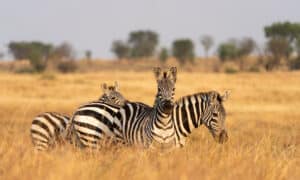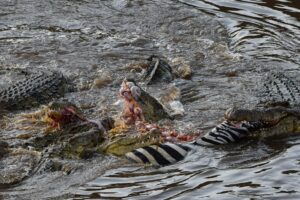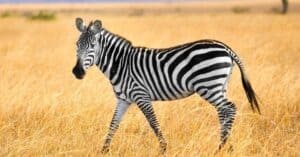With soft, fuzzy hair, long wobbly legs, and uniquely painted bodies, baby zebras are irresistibly cute. However, baby zebras are more than just adorable faces and charming personalities. They are also incredibly resilient animals, facing the dangers of wild Africa as soon as they are born. In this post, we uncover the captivating physical traits and fascinating behaviors of these adorable animals. So, brace yourself for an avalanche of sheer cuteness with these heart-melting pictures and amazing facts about baby zebras!!
1. There Are Three Different Species of Zebras
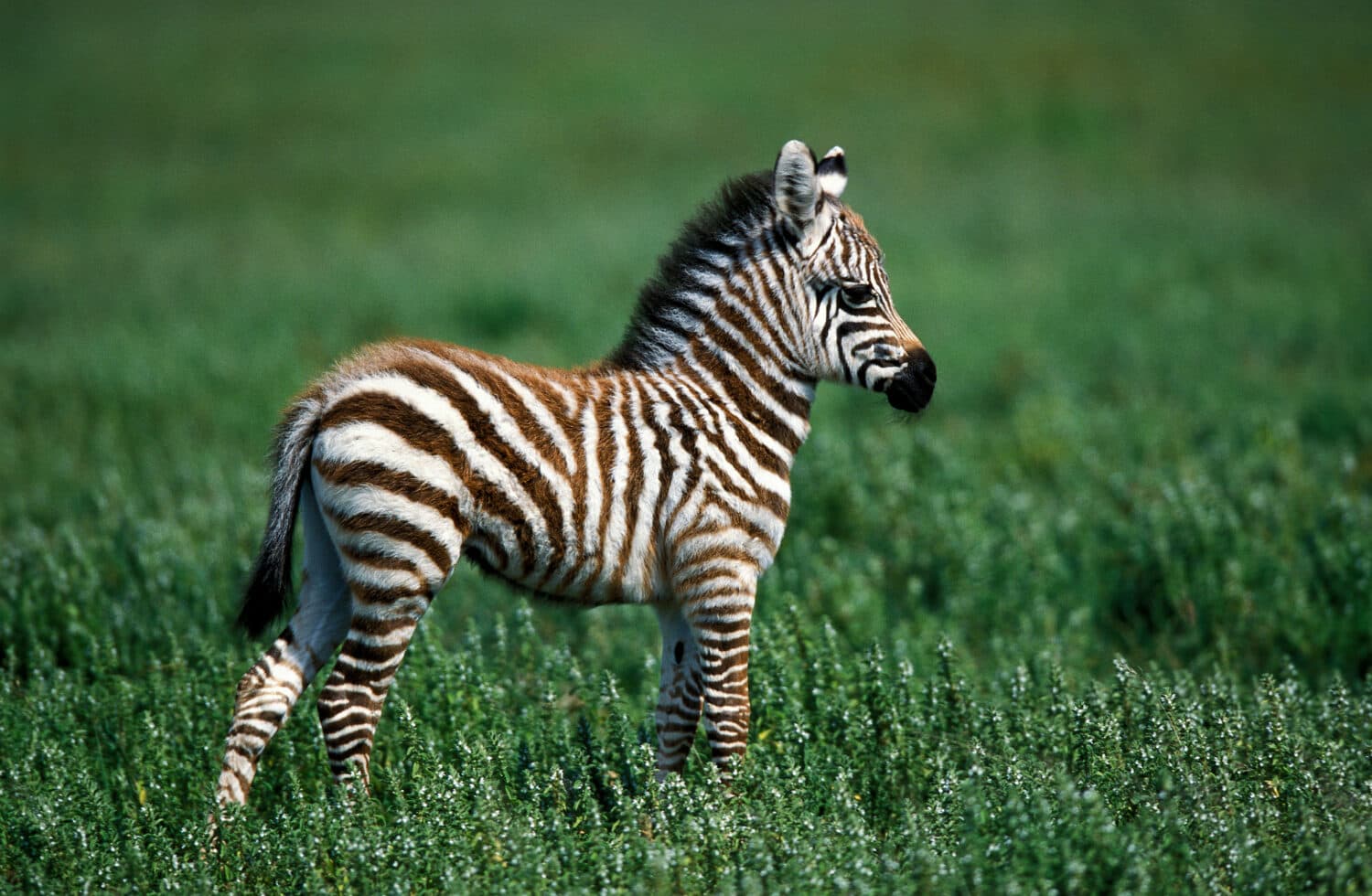
Burchell’s zebra (
Equus quagga burchellii) is a subspecies of the plains zebra.
©slowmotiongli/Shutterstock.com
Today, there are three different species of baby zebras: the Grévy’s zebra (Equus grevyi), the plains zebra (Equus quagga), and the mountain zebra (Equus zebra). The most common and widespread species is the plains zebra, which lives in the savannas and grasslands of Eastern and Southern Africa. The largest zebra species is the Grévy’s zebra, which lives in dry grasslands and semi-deserts in Kenya and Ethiopia. The last is the mountain zebra, which lives in mountainous regions of South Africa. In addition to these three zebra species, there are also several prominent subspecies.
2. Zebras Are Related to Horses
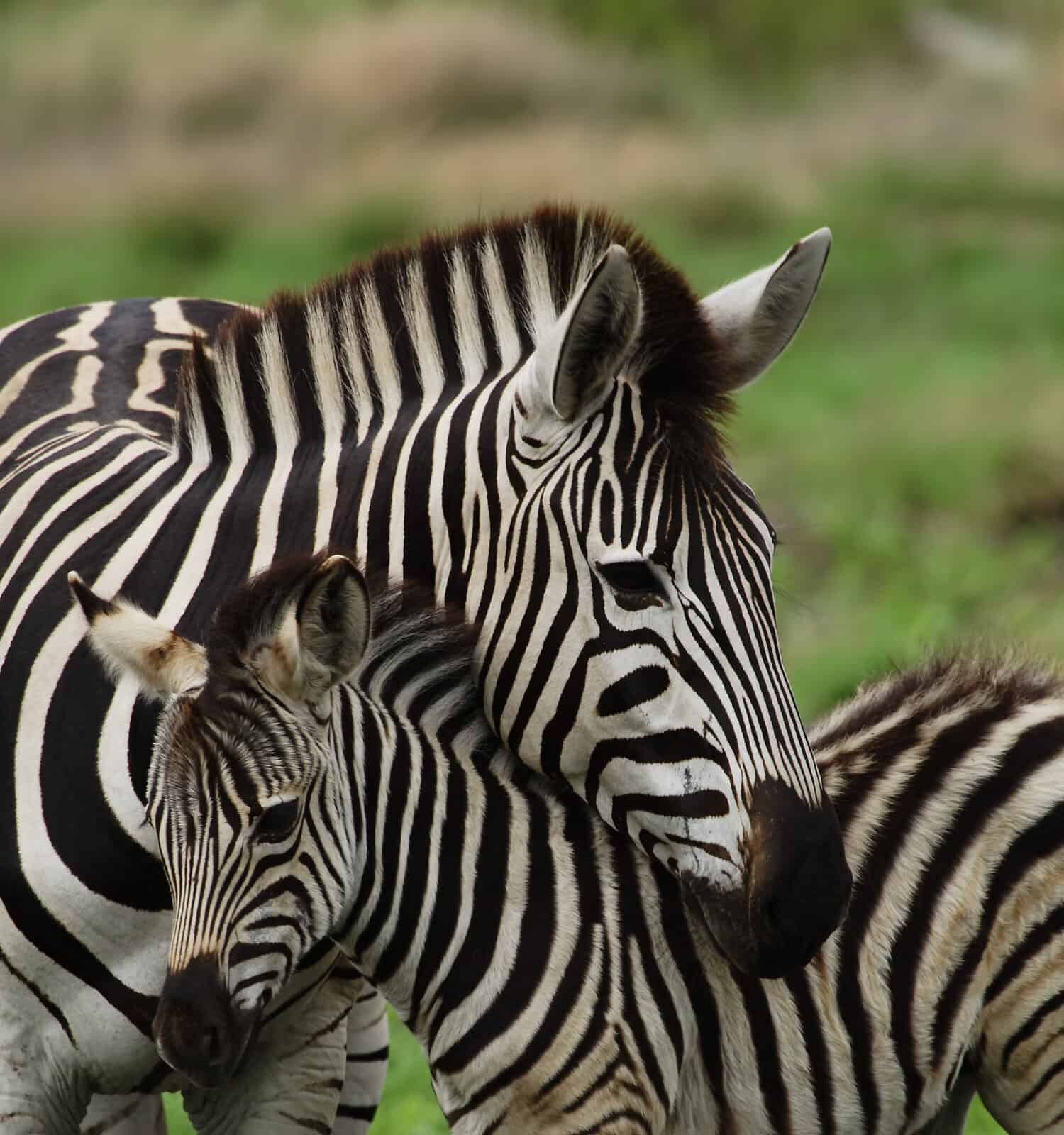
Baby zebras develop strong bonds with their mothers.
©Victor Soares/Shutterstock.com
Zebras are classified in the Equus genus and Equidae family as relatives of horses and asses. In fact, the Ancient Greeks and Romans called African zebras “hippotigris” or “horse tigers”. Since they are closely related to horses, equine terminology is used to describe zebra babies. For example, a baby zebra is called a “foal”. In addition, we call female baby zebras “fillies” and male baby zebras “colts”. These terms are used for the first three years of a baby zebra’s life.
3. Mothers Only Give Birth to One Baby Zebra at a Time
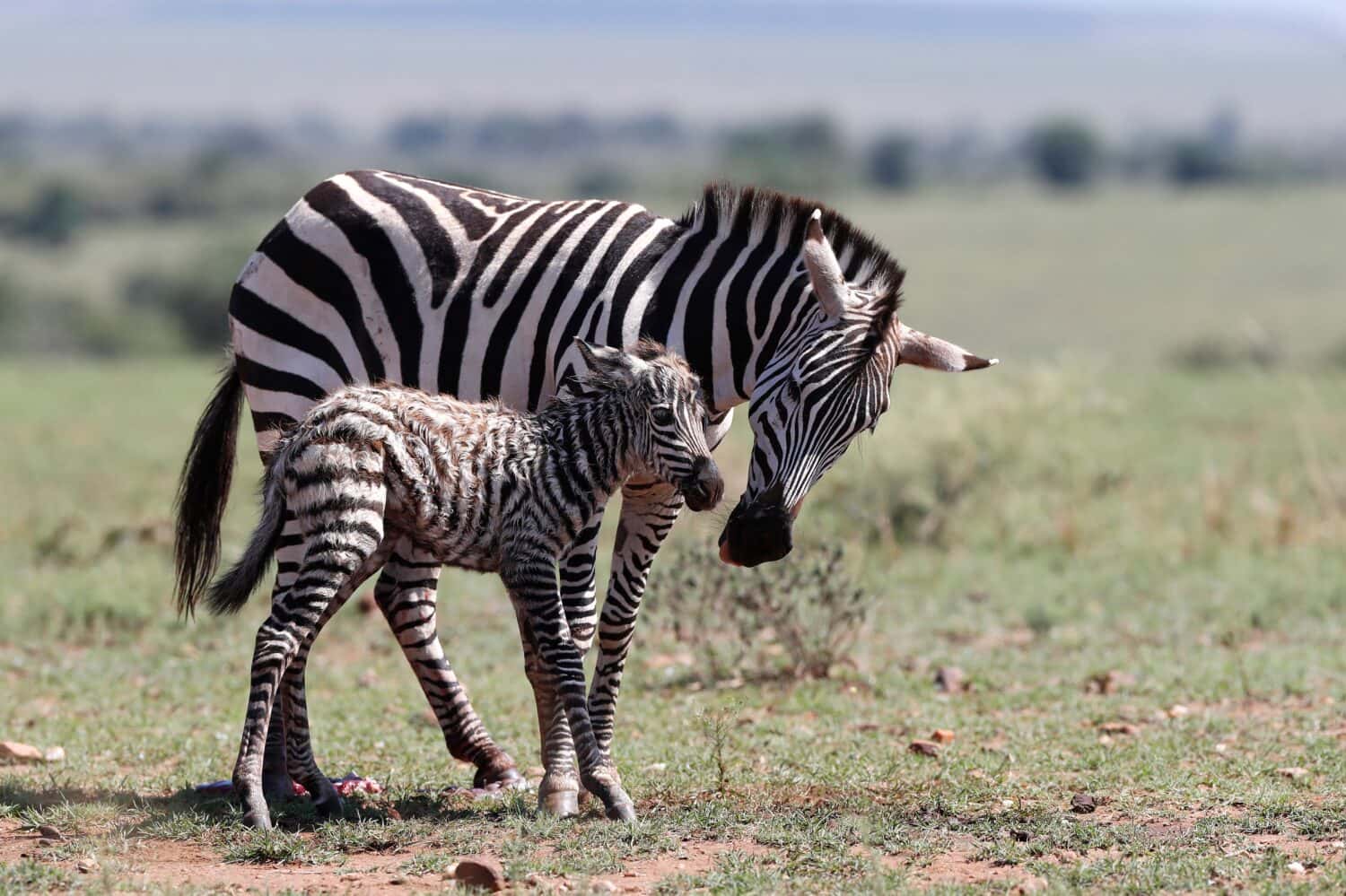
Zebras are the only equine species with stripes!
©godongphoto/Shutterstock.com
Zebras form family groups with one male and lots of females, as well as bachelor groups with only males. After mating, it takes about 12 to 13 months for a baby zebra to be born. When the time comes, a pregnant female zebra will seek solitude away from her protective herd, often in the darkness of the night. Most zebras lay down on their sides to give birth, but a few actually give birth while standing! Unlike regular horses that have twins on rare occasions, zebras only have one baby at a time. It’s extremely rare to see a zebra mom with twin babies.
4. Baby Zebras Aren’t Black and White
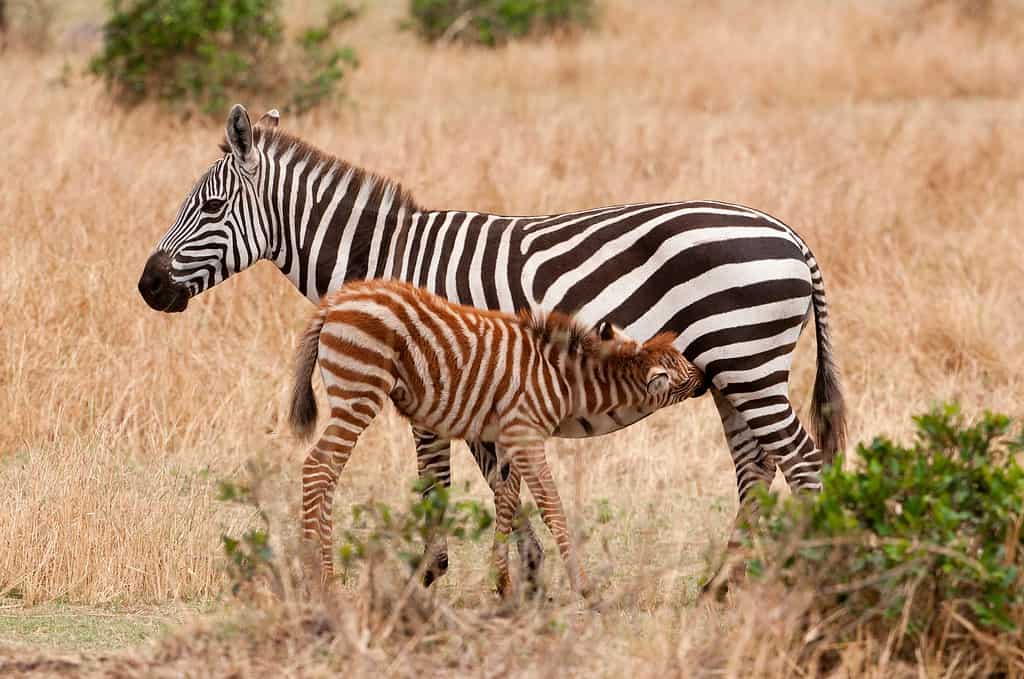
Baby zebras need to stand up as soon as possible so they can nurse.
©catahoulagirl/Shutterstock.com
There are few things in the world as cute as a baby zebra! Like their parents, baby zebras come into the world sporting iconic coats, with vertical stripes that gracefully transition into horizontal stripes on their hindquarters. Each zebra boasts a unique and awe-inspiring stripe pattern, making them truly one-of-a-kind! However, baby zebras are slightly different — they aren’t black and white! Instead, zebra foals are born with brown and white stripes instead of black and white ones. As they grow and mature, these lighter stripes slowly darken and intensify to black.
In addition, some baby zebras are born with unique genetics that give them a very unusual appearance. For example, there are zebras that are all black with white stripes, zebras that are mostly dark with lighter stripes only on certain parts of their body, and some who are mostly white with dark stripes. And on very, very rare occasions, there have even been dark-colored zebra babies with tiny white spots!
5. Baby Zebras Can Stand and Walk On Their First Day of Life
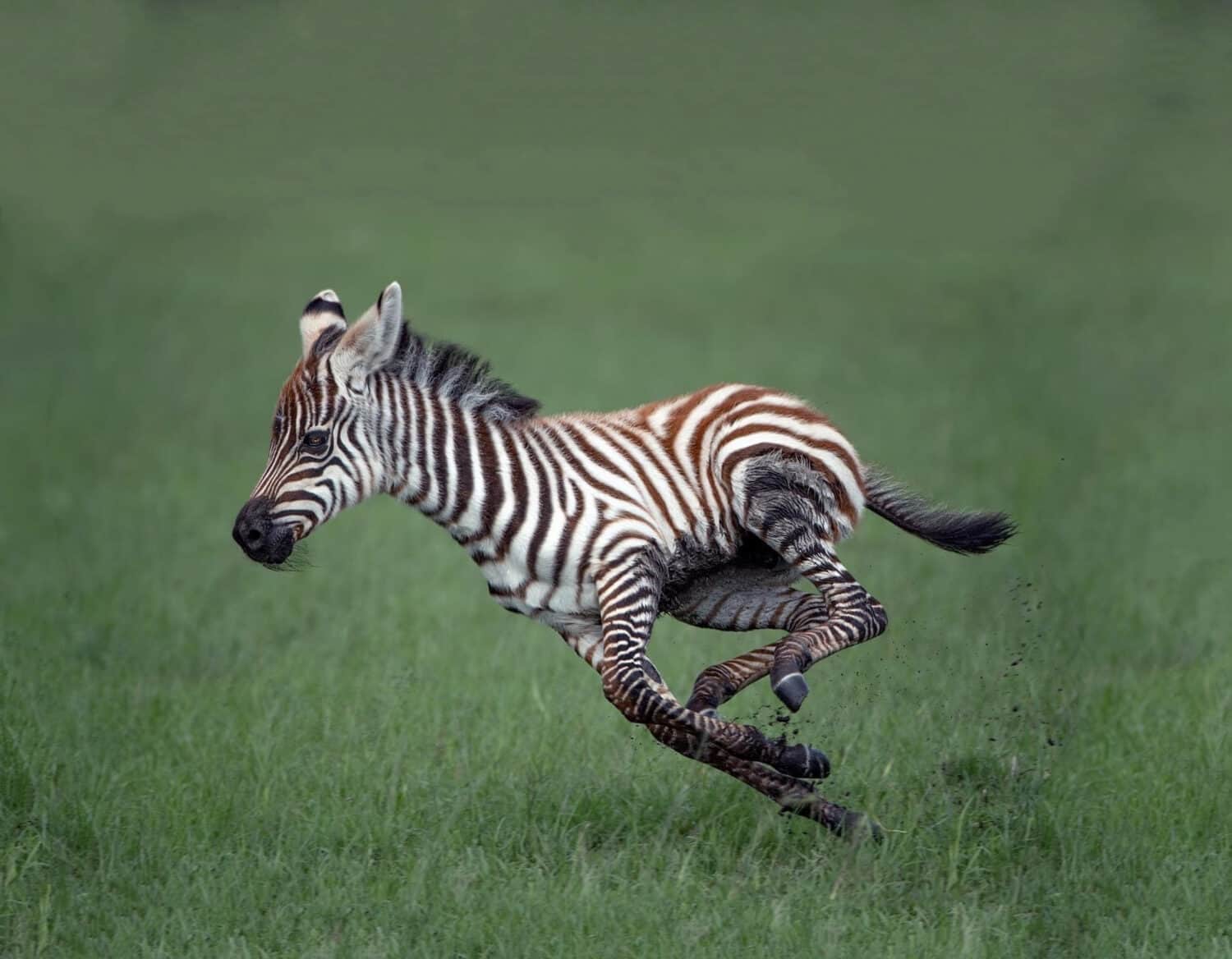
Like puppies, baby zebras commonly experience the “zoomies” and enjoy running around.
©Vladimir Turkenich/Shutterstock.com
When they are first born, baby zebras usually weigh about 70 pounds, with long legs that are nearly the size of an adult. Their eyes and ears are open, and they can stand upright within the first 10 to 20 minutes! Even more astonishing, a baby zebra can walk — and even run — within just one hour after birth!
The mother and baby stay together for the next few days, away from the rest of the herd. During this time, the two become familiar with one another, and the foal memorizes its mother’s uniquely striped patterning. Once this special bonding time is over, the two will rejoin the herd.
6. Some Zebras Are Only Half Zebra

Each zebra-equine hybrid, or “zebroid”, has its own unique appearance.
©Shllabadibum Bubidibam/Shutterstock.com
Typically, zebras breed within their own species. However, they also have the fascinating ability to breed between subspecies, and even with other equine species, such as horses, donkeys, and ponies. When this occurs, the unique cross-bred baby zebra is called a “zebroid”. Zebroids typically take after their non-zebra parent when it comes to their physical appearance, but with a unique twist — those iconic zebra stripes! Of course, those stripes don’t always cover their entire body like they would on a typical zebra. Some zebroids may have bold stripes just on their legs, while others may only have striped patterns on their necks or bodies.
Zebroid babies have different names, depending on the species of their non-zebra parent. For example, when a zebra and a pony mate, their offspring are called zonies. However, if a donkey and a zebra find love, their babies are called zebrasses, zedonks, or zonkeys. And if a horse and a zebra get together, the result is an adorable baby zorse.
7. Baby Zebras Eat Solid Foods Quickly
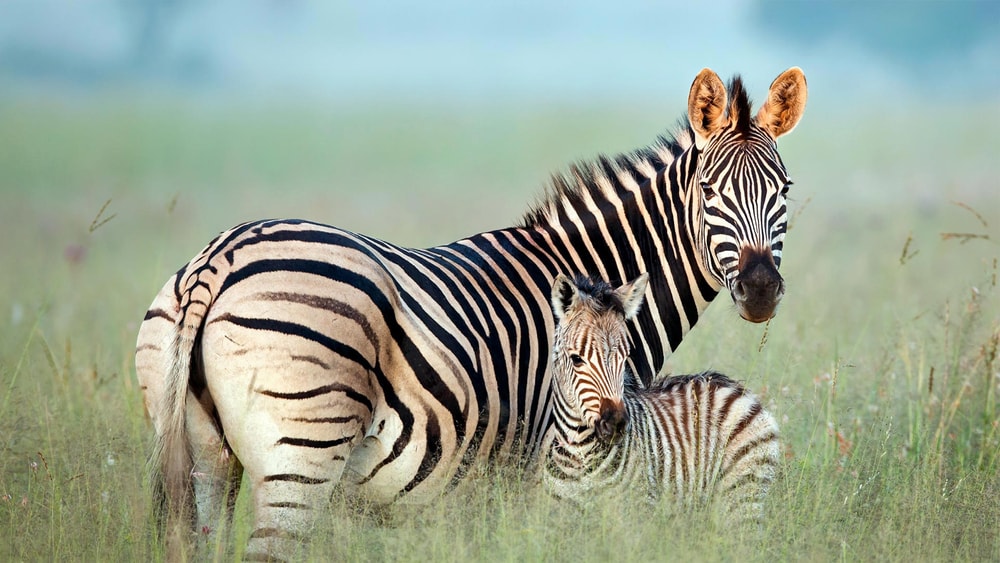
Just like human fingerprints, no two zebras have the same stripe pattern.
©Shllabadibum Bubidibam/Shutterstock.com
When it comes to mealtime, baby zebras know how to chow down. These adorable striped wonders have quite the appetite and may nurse from their mothers for a year and a half. However, the most intense part of their nursing typically lasts less than nine months.
Just as young zebras quickly learn to walk and run, they also begin grazing on their own and nibble on grass within just a few weeks of being born. Depending on where they live, they have quite a variety on their mealtime menu. Zebras munch on grass, fruit, bark, twigs, stems, roots, and leaves. In zoos, they often eat grass, pellets, alfalfa, hay, and carrots.
8. Baby Zebras Are Social Animals
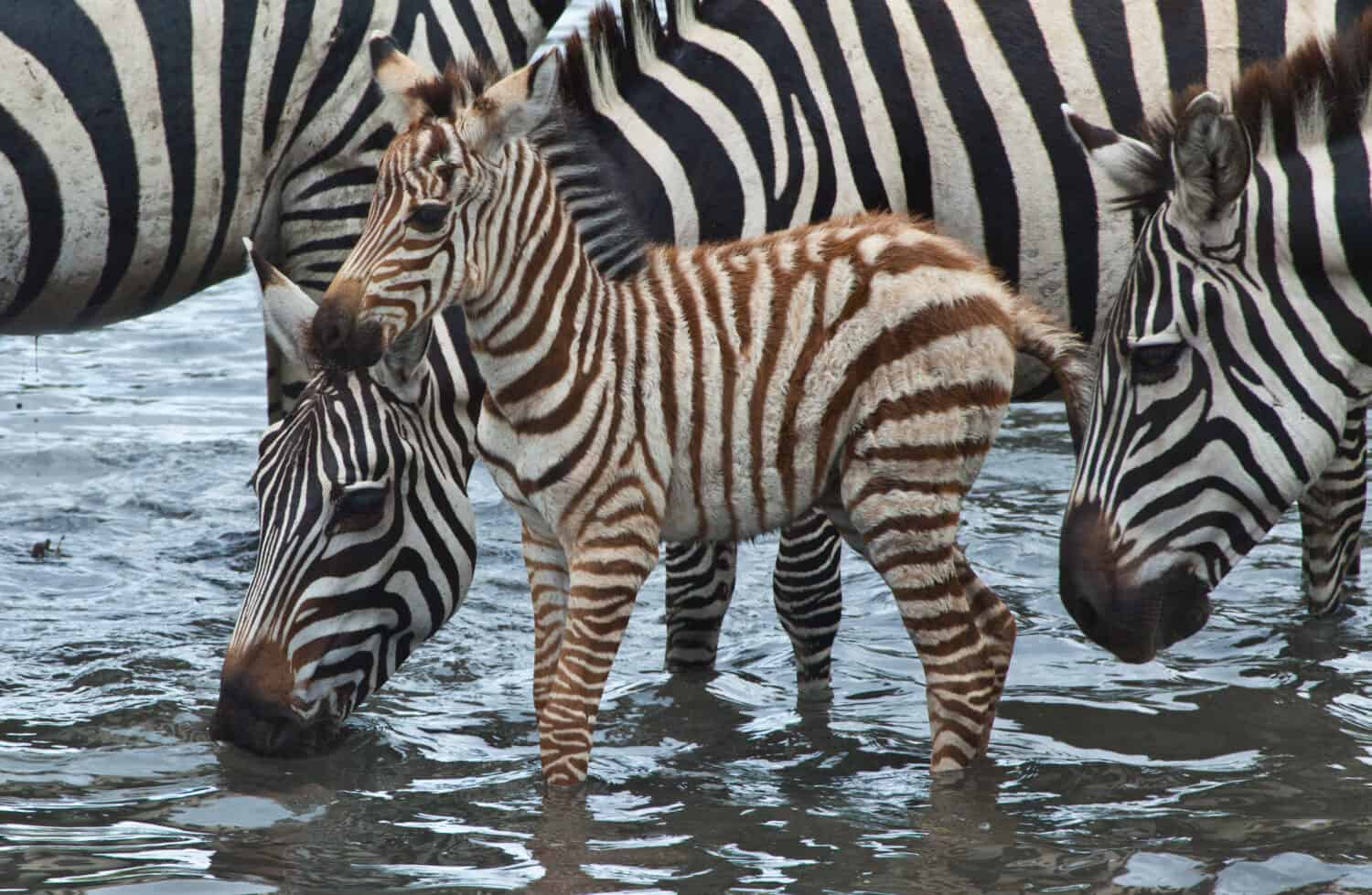
Baby zebras stick close to their mothers for at least the first year of life.
©Gary C. Tognoni/Shutterstock.com
Plains zebras and mountain zebras are incredibly social animals and stick together in big groups. These large family units typically consist of a stallion or male zebra, several mares or female zebras, and the adorable foals or baby zebras. In addition, during special times of the year, these family groups sometimes join together with other herds to create even bigger groups. However, the original family units do not split up. They stick together, even amongst hundreds of other zebras.
Grévy’s zebras do things a bit differently than their other relatives. Male zebras establish their own territories, although they often socialize with other males in the area. Female zebras and their babies can come and go throughout these territories as they please. Until they are around three months old, baby zebras hang out with other foals and their mothers in small groups, like their own special zebra kindergarten. However, when the mothers need a break or go to drink water, they leave the foals in the care of a single adult male zebra.
9. Zebras Are Endangered
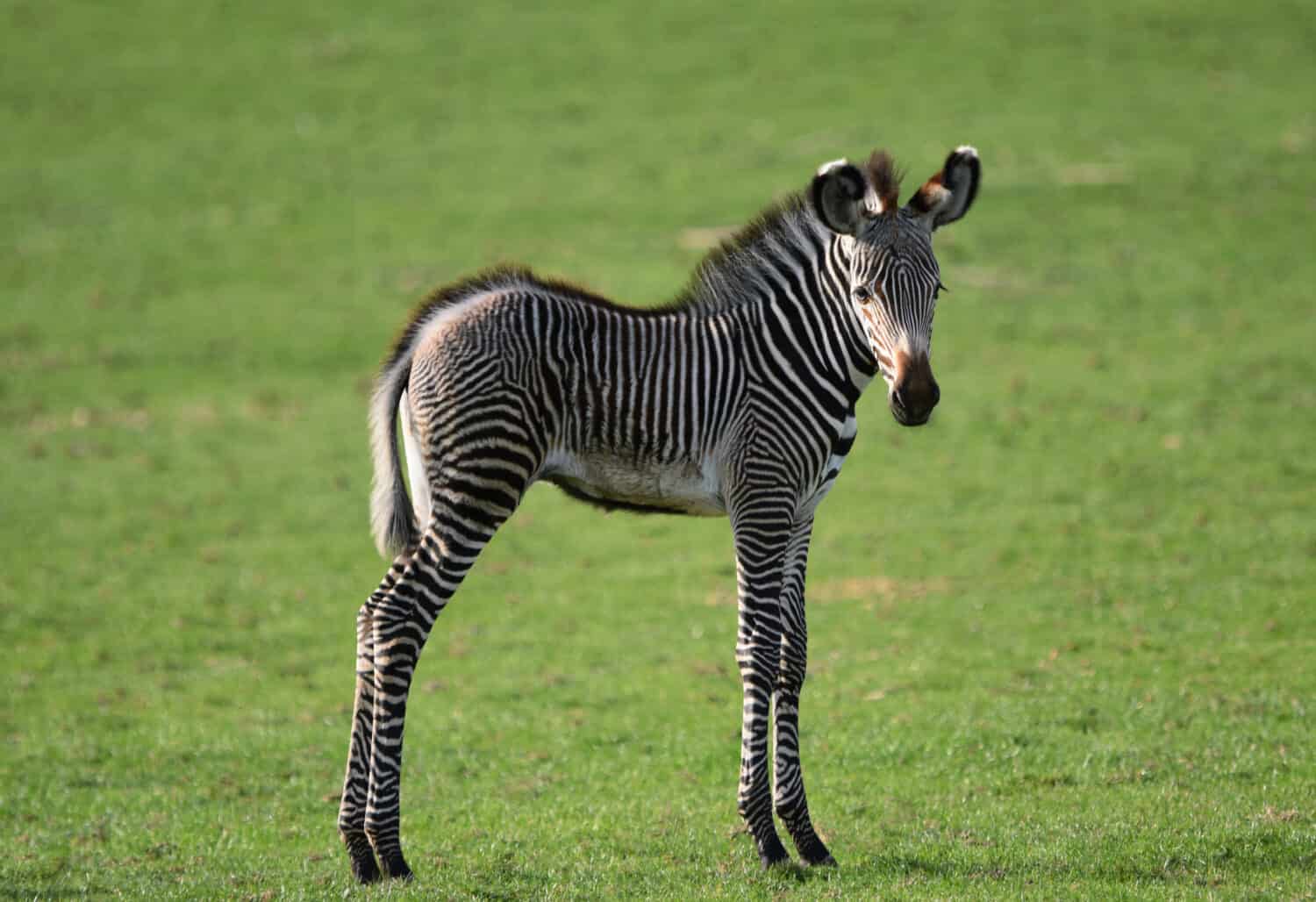
The rarest zebra species in the world is the Grévy’s zebra, with less than 2,500 left in the wild.
©Amani A/Shutterstock.com
Sadly, all three species of zebra are endangered or threatened in the wild, and many zebra subspecies have come very close to extinction. One of the major challenges to zebra populations is human encroachment and the expansion of livestock grazing. This has led to a significant loss of habitats for zebras. In addition, some humans hunt zebras for their meat and their distinctive fur coats. And of course, zebras also have to contend with natural predators in the wild, such as lions, hyenas, leopards, wild dogs, cheetahs, and crocodiles. This is especially a problem for baby zebras — only about 50% will ever reach adulthood.
10. Zebras Only Live in Africa

Zebras can run up to 35 miles per hour.
©Zachary Zirlin/Shutterstock.com
Over 40,000 years ago, zebras lived across Europe and all the way to Asia. Today, however, these fascinating creatures can only be found roaming the wild in Africa. They once roamed across the entire African continent, but now they can only be found in southern and southwestern Africa and some parts of East Africa.
Like humans, zebras have different habitats that they call home. For example, Grévy’s zebras live in isolated populations in the semi-arid grasslands of Kenya and Ethiopia. Mountain zebras, on the other hand, live on rocky arid slopes in Angola and Namibia. Last but not least, plains zebras live in East Africa and Southern Africa, making themselves at home from grassland habitats to scrubby woodlands. In addition, Grant’s zebra — a special subspecies of the plains zebras — are known for their epic migrations during the rainy season in the Serengeti. During this time, up to 10,000 zebras travel across the land in massive herds!
The photo featured at the top of this post is © nwdph/Shutterstock.com
Thank you for reading! Have some feedback for us? Contact the AZ Animals editorial team.




